Cambridge C1 Advanced (CAE) Writing: How to Write the Review
What you will find in this guide:
C1 Review
Writing a C1 level review is a critical skill for anyone preparing for the Cambridge C1 Advanced (CAE) exam. The C1 review isn’t just a review; it’s a tool for the examiners to see how proficient you are in writing, and for you to express your personal opinion about something you’ve experienced, be it a film, a holiday, a product, or a website.
But first, let’s review some key info about writing a review for Cambridge C1 Advanced (CAE):
Sure, here’s some information about the task of writing a review in the Cambridge C1 Advanced (CAE) exam:
- The main purpose is to describe and express a personal opinion about something that you have experienced (e.g., a film, a holiday, a product, a website, etc.) and to give the reader a clear impression of what the item discussed is like.
- The structure of a review typically includes a title, an introduction, main content, and a recommendation1.
- You need to consider who is the target reader is.
Sample C1 Review
A travel website has asked you to write a review of a holiday resort you have been to, explaining what kinds of people the resort is likely to appeal to, and which aspects of the resort you would most recommend to other visitors. You should also suggest at least one way in which you feel the resort could be improved.
Write your review.
Potential Challenges of Writing a C1 Review
Here are some potentially challenging factors:
1. Understanding the Task
According to the C1 Advanced (CAE) rubric, task achievement is very important to get a C1 level score1. And fulfilling what the task wants you to do is impossible without knowing what the task requires you to do. Sometimes, candidates do not read the task carefully and write about a similar topic without realizing that they are doing the wrong task!
2. Time Management
Though other exams (TOEFL, IELTS, PTE, iTEP) provide significantly less time to do the writing task, Cambridge C1 Advanced gives you enough time to write your review. However, some still find the allocated time insufficient. If you think the time is not enough for you, you need to work on your time management skills.
3. Language Proficiency
The C1 Advanced exam tests high-level English proficiency including accuracy in language use and the use of a range of simple and complex grammar and vocabulary2. Though most candidates possess good knowledge of grammar and vocabulary, maintaining accuracy and relevance at the time you are writing your review may be challenging.
How to Write a Review for the C1 Advanced (CAE) Exam: A Step-by-Step Guide
Let’s break it down into simple, easy-to-follow steps.
Step 1: Analyze Your Task
In this step, you need to carefully examine the instructions or requirements of the task you’ve been given. Look for two main components: a description part where you have to describe something like a film or book, and a discussion part where you need to give an opinion and/or make a recommendation. Additionally, identify the target reader, which could be a general audience, a specific demographic, or someone with particular interests.
Step 2: Decide What You Want to Write About
After understanding your task, you need to decide on the subject of your review. It could be a book, a movie, a trip, or any other experience that fits the task requirements. Think about the main features of the subject—what stands out about it? This could include plot points, character development, cinematography, writing style, destination highlights, etc.
Step 3: Write an Outline to Organize Your Thoughts
Creating an outline helps you organize your ideas and ensures a logical flow in your writing. Start with an introduction to set the stage for your review. Then, include a summary of the material you’re reviewing, your critique where you analyze its strengths and weaknesses, and finally, a conclusion that sums up your thoughts and potentially offers a recommendation.
Step 4: Decide About the Vocabulary and Grammar to Use in Each Paragraph
This step involves carefully selecting the vocabulary and grammatical structures for each paragraph. Aim for a balance between complexity and clarity. While it’s essential to demonstrate your proficiency in language, avoid using overly complex language that could make your writing seem artificial or difficult to understand. Tailor your language choices to the target reader identified in step 1.
Step 5: Start Writing
With your outline and language decisions in mind, start writing your review. Follow the structure outlined in your outline, and remember to incorporate your chosen vocabulary and grammar appropriately. Be descriptive yet concise in your descriptions and critical yet constructive in your analysis.
Step 6: Revise, Edit, and Proofread
Once you’ve completed your review, take the time to review it for any errors or areas where you can improve clarity. Check for spelling, grammar, and punctuation mistakes. Ensure that your review is easy to read and understand for your target audience. Proofread your work thoroughly before finalizing it.
Let’s Answer the Sample C1 Review Question
Sample Outline
- Target audience = couples, families, solo travelers
Serene ambiance amidst lush greenery - Recommendations =
Praise for staff hospitality
Highlight of resort facilities and recreational activities - Recommendation = for on-site restaurant
Improvement - Suggestion = Enhancing Wi-Fi connectivity across the premises
Sample Vocabulary
- Lush
- Unwind
- Tranquil
- Impeccable of values
- Tantalizing
Sample Answer
Review: Tranquil Haven Resort
Nestled amidst the lush greenery of the countryside, Tranquil Haven Resort is a serene retreat that offers a perfect escape from the hustle and bustle of city life. My recent stay at this idyllic resort left me rejuvenated and thoroughly impressed. Here’s why:
Tranquil Haven Resort caters to a diverse range of travelers seeking solace in nature’s embrace. It’s ideal for couples looking for a romantic getaway, families yearning for quality time together, and solo travelers seeking peace and tranquility. The resort’s serene ambiance and abundance of recreational activities make it equally appealing to both adventure enthusiasts and those simply wanting to unwind.
One of the highlights of my stay was the impeccable service provided by the staff. From the warm welcome at check-in to the attentive assistance throughout my stay, their hospitality truly enhanced my experience. Additionally, the resort’s well-maintained facilities, including the swimming pool, spa, and hiking trails, offered ample opportunities for relaxation and recreation. Moreover, the on-site restaurant served delectable dishes crafted from fresh, locally sourced ingredients, tantalizing the taste buds with every bite.
While my stay at Tranquil Haven Resort was near-perfect, I believe enhancing the Wi-Fi connectivity across the entire premises would further elevate the guest experience. While disconnecting from technology is often part of the allure of a countryside retreat, reliable internet access is essential for guests who may need to stay connected for work or communication purposes.
In conclusion, Tranquil Haven Resort exceeded my expectations in every aspect, from its serene ambiance to its exceptional service. Whether you’re seeking relaxation, adventure, or simply a break from the ordinary, this resort is sure to provide an unforgettable experience. With a few enhancements to the Wi-Fi connectivity, it would undoubtedly be a flawless haven for travelers seeking solace in nature’s embrace.
Understanding the CAE Writing Rubric
The Cambridge C1 Advanced Writing paper is scored based on four key criteria1:
- Content: This assesses how well you have fulfilled the task, if all the content is relevant to the task, and if the target reader is fully informed.
- Communicative Achievement: This checks if the writing is appropriate for the task, if it uses the right register and tone, and if all the points are communicated effectively.
- Organisation: This looks at the way the text is organised, if it uses the right conventions of the communicative task, and if the text is coherent and cohesive.
- Language: This assesses the range of vocabulary and grammatical structures, the level of accuracy in their use, and the appropriateness of the language to the task.
FAQ
The Writing paper of the Cambridge C1 Advanced exam consists of two parts: One Essay and one task where you can choose your task from given options.
You are required to choose one type of writing in the second task. Your options are: Writing a letter, an email, a proposal, a report, and a review.
The Writing paper is assessed based on your control of a range of language, correct use of grammar structures, specificity of words or structures to express your ideas, and the effective use of functional language to persuade, agree, or compare







iDFOFBYAjsNxURrPwnIR
Actually. Tell to me, please – where I can find more information on this question?